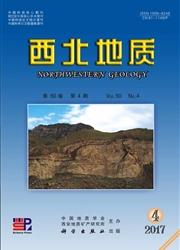

 中文摘要:
中文摘要:
在严重缺水的陕北吴起地区,白垩系地下水中Cr^6+严重超标,其为原生地质环境所致,还是石油开采等污染引起,不能确定,直接影响着该区地下水资源的开发利用。通过专项水文地质调查,系统地采集分析了岩(土)、水样及石油样品,总结分析了该区Cr^6+的来源与富集规律。研究结果表明,吴起地区地下水中Cr^6+主要来源于区内含水层上覆的土层,其白垩系地下水中Cr^6+含量受控于地质结构及地下水循环。大气降水在入渗过程中通过水岩作用将土层中Cr元素带入地下水中,在地下水循环过程中受到氧化还原环境影响富集于不同含水系统中,使得地下水中Cr^6+不同程度超标。
 英文摘要:
英文摘要:
Six-valence chromium is exceeded in Cretaceous Groundwater from Wuqi County.There are many different versions about the sources of Cr^6+,the six-valence chromium may be sourced from layer,surface water,groundwater and human activities.After carrying out the environmental hydrogeology survey,collecting thesamples ofrock,water and petroleum based on watershed unit,the sources and distribution regularity of six-valence chromium have been summarized and analyzed systematically.The results show that the six-valence chromium in groundwater was mainly originated from the soil in Wuqi County,and the content of six-valence chromium in Cretaceous groundwater was controlled by special geological structure and hydrogeological condition.The chromium elements were brought into the groundwater by water-rock interaction in the rainfall infiltration processes,and are influenced by the sediment redox environment during the groundwater circulation processes,and then enriched into the different water-bearing systerns.These processesresulted that the six-valence chromium is over-standard at different degree in groundwater.
 同期刊论文项目
同期刊论文项目
 同项目期刊论文
同项目期刊论文
 期刊信息
期刊信息
